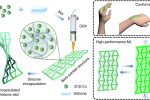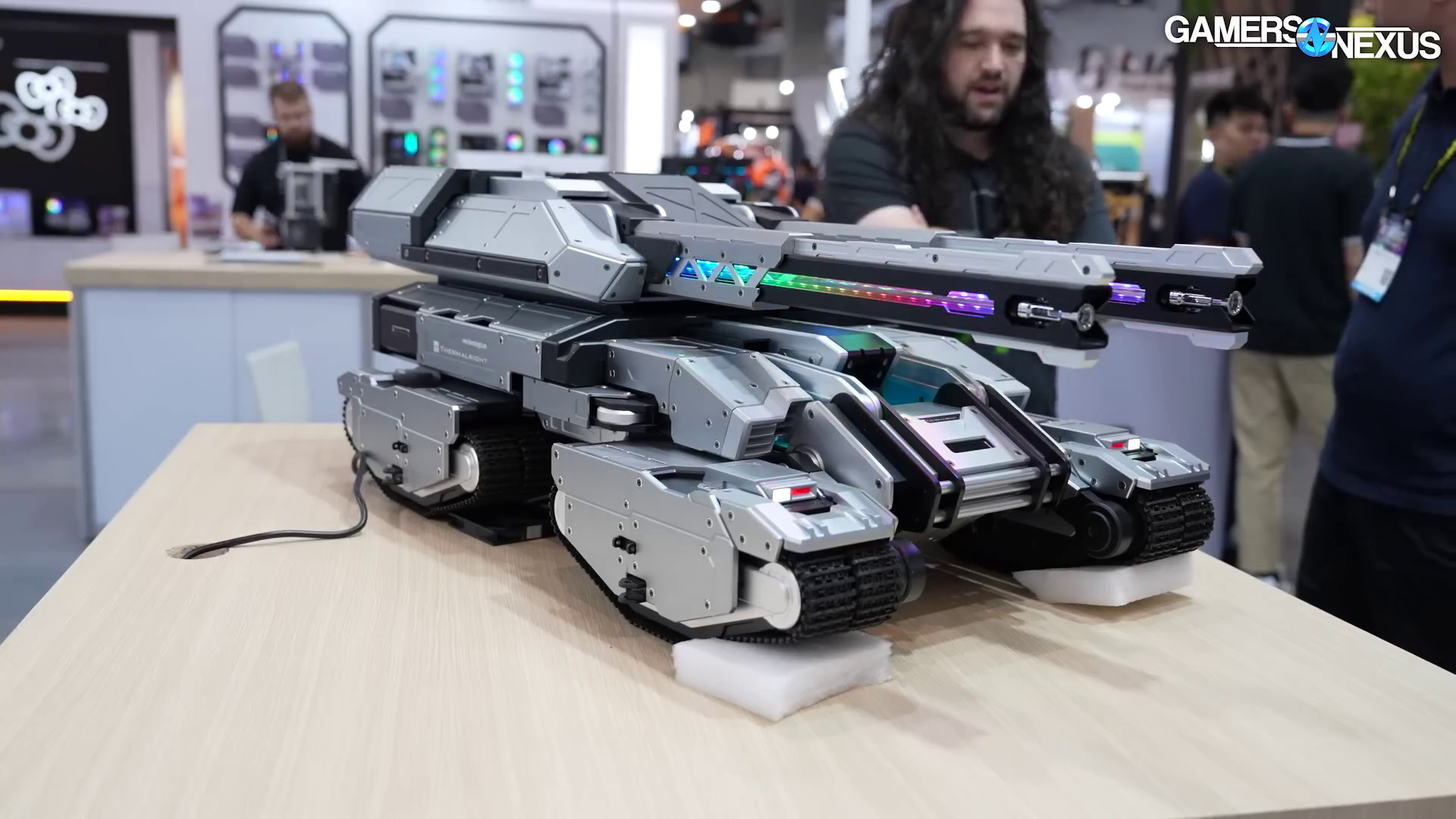NUS researchers 3D print self-powered photonic skin for underwater communication and safety
Researchers from the National University of Singaporehave developed a 3D printed, self-powered mechanoluminescentphotonic skin designed for communication and safety monitoring in underwater environments. The stretchable device emits light in response to mechanical deformation, requires no external power source, and remains functional under conditions such as high salinity and extreme temperatures.
The findings were published in Advanced Materials by Xiaolu Sun, Shaohua Ling, Zhihang Qin, Jinrun Zhou, Quangang Shi, Zhuangjian Liu, and Yu Jun Tan. The research was conducted at NUS and Singapore’s Agency for Science, Technology and Research.
Schematic of the 3D printed mechanoluminescent photonic skin showing fabrication steps and light emission under deformation. Image via Sun et al., Advanced Materials.
3D printing stretchable light-emitting skins with auxetic geometry
The photonic skin was produced using a 3D printing method called direct-ink-writing, which involves extruding a specially formulated ink through a fine nozzle to build up complex structures layer by layer. In this case, the ink was made by mixing tiny particles of zinc sulfide doped with copper, a material that glows when stretched, with a flexible silicone rubber. These particles serve as the active ingredient that lights up when the material is deformed, while the silicone acts as a soft, stretchable support structure.
To make the device more adaptable to movement and curved surfaces, like human skin or underwater equipment, the researchers printed it using auxetic designs. Auxetic structures have a rare mechanical property known as a negative Poisson’s ratio. Unlike most materials, which become thinner when stretched, auxetic designs expand laterally under tension. This makes them ideal for conforming to curved or irregular surfaces, such as joints, flexible robots, or underwater gear, without wrinkling or detaching.
Encapsulating the printed skin in a clear silicone layer further improves performance by distributing mechanical stress evenly. This prevents localized tearing and ensures that the light emission remains bright and uniform, even after 10,000 cycles of stretching and relaxing. In previous stretchable light-emitting devices, uneven stress often led to dimming, flickering, or early material failure.
Mechanical and optical performance of encapsulated photonic skin across 10,000 stretch cycles. Image via Sun et al., Advanced Materials.
Underwater signaling, robotics, and gas leak detection
The team demonstrated multiple applications for the photonic skin. When integrated into wearable gloves, the skin enabled light-based Morse code communication through simple finger gestures. Bending one or more fingers activated the mechanoluminescence, emitting visible flashes that corresponded to messages such as “UP,” “OK,” or “SOS.” The system remained fully functional when submerged in cold water, simulating deep-sea conditions.
In a separate test, the skin was applied to a gas tank mock-up to monitor for leaks. A pinhole defect was covered with the printed skin and sealed using stretchable tape. When pressurized air escaped through the leak, the localized mechanical force caused a bright cyan glow at the exact leak site, offering a passive, electronics-free alternative to conventional gas sensors.
To test performance on soft and mobile platforms, the researchers also mounted the photonic skin onto a robotic fish. As the robot swam through water tanks at different temperatures, the skin continued to light up reliably, demonstrating its resilience and utility for marine robotics.
Comparison of printed photonic skin structures with different geometries and their conformability to complex surfaces. Image via Sun et al., Advanced Materials.
Toward electronics-free underwater communication
While LEDs and optical fibers are widely used in underwater lighting systems, their dependence on rigid form factors and external power makes them unsuitable for dynamic, flexible applications. In contrast, the stretchable ML photonic skin developed by NUS researchers provides a self-powered, adaptable alternative for diver signaling, robotic inspection, and leak detection, potentially transforming the toolkit for underwater communication and safety systems.
Future directions include enhanced sensory integration and robotic applications, as the team continues exploring robust photonic systems for extreme environments.
Photonic skin integrated into gloves for Morse code signaling and applied to robotic fish and gas tanks for underwater safety monitoring. Image via Sun et al., Advanced Materials.
The rise of 3D printed multifunctional materials
The development of the photonic skin reflects a broader trend in additive manufacturing toward multifunctional materials, structures that serve more than a structural role. Researchers are increasingly using multimaterial 3D printing to embed sensing, actuation, and signaling functions directly into devices. For example, recent work by SUSTech and City University of Hong Kong on thick-panel origami structures showed how multimaterial printing can enable large, foldable systems with high strength and motion control. These and other advances, including conductive FDM processes and Lithoz’s multimaterial ceramic tools, mark a shift toward printing entire systems. The NUS photonic skin fits squarely within this movement, combining mechanical adaptability, environmental durability, and real-time optical output into a single printable form.
Read the full article in Advanced Materials
Subscribe to the 3D Printing Industry newsletter to keep up with the latest 3D printing news.
You can also follow us onLinkedIn and subscribe to the 3D Printing Industry YouTube channel to access more exclusive content. At 3DPI, our mission is to deliver high-quality journalism, technical insight, and industry intelligence to professionals across the AM ecosystem.Help us shape the future of 3D printing industry news with our2025 reader survey.
Featured image shows a schematic of the 3D printed mechanoluminescent photonic skin showing fabrication steps and light emission under deformation. Image via Sun et al., Advanced Materials.
#nus #researchers #print #selfpowered #photonic
NUS researchers 3D print self-powered photonic skin for underwater communication and safety
Researchers from the National University of Singaporehave developed a 3D printed, self-powered mechanoluminescentphotonic skin designed for communication and safety monitoring in underwater environments. The stretchable device emits light in response to mechanical deformation, requires no external power source, and remains functional under conditions such as high salinity and extreme temperatures.
The findings were published in Advanced Materials by Xiaolu Sun, Shaohua Ling, Zhihang Qin, Jinrun Zhou, Quangang Shi, Zhuangjian Liu, and Yu Jun Tan. The research was conducted at NUS and Singapore’s Agency for Science, Technology and Research.
Schematic of the 3D printed mechanoluminescent photonic skin showing fabrication steps and light emission under deformation. Image via Sun et al., Advanced Materials.
3D printing stretchable light-emitting skins with auxetic geometry
The photonic skin was produced using a 3D printing method called direct-ink-writing, which involves extruding a specially formulated ink through a fine nozzle to build up complex structures layer by layer. In this case, the ink was made by mixing tiny particles of zinc sulfide doped with copper, a material that glows when stretched, with a flexible silicone rubber. These particles serve as the active ingredient that lights up when the material is deformed, while the silicone acts as a soft, stretchable support structure.
To make the device more adaptable to movement and curved surfaces, like human skin or underwater equipment, the researchers printed it using auxetic designs. Auxetic structures have a rare mechanical property known as a negative Poisson’s ratio. Unlike most materials, which become thinner when stretched, auxetic designs expand laterally under tension. This makes them ideal for conforming to curved or irregular surfaces, such as joints, flexible robots, or underwater gear, without wrinkling or detaching.
Encapsulating the printed skin in a clear silicone layer further improves performance by distributing mechanical stress evenly. This prevents localized tearing and ensures that the light emission remains bright and uniform, even after 10,000 cycles of stretching and relaxing. In previous stretchable light-emitting devices, uneven stress often led to dimming, flickering, or early material failure.
Mechanical and optical performance of encapsulated photonic skin across 10,000 stretch cycles. Image via Sun et al., Advanced Materials.
Underwater signaling, robotics, and gas leak detection
The team demonstrated multiple applications for the photonic skin. When integrated into wearable gloves, the skin enabled light-based Morse code communication through simple finger gestures. Bending one or more fingers activated the mechanoluminescence, emitting visible flashes that corresponded to messages such as “UP,” “OK,” or “SOS.” The system remained fully functional when submerged in cold water, simulating deep-sea conditions.
In a separate test, the skin was applied to a gas tank mock-up to monitor for leaks. A pinhole defect was covered with the printed skin and sealed using stretchable tape. When pressurized air escaped through the leak, the localized mechanical force caused a bright cyan glow at the exact leak site, offering a passive, electronics-free alternative to conventional gas sensors.
To test performance on soft and mobile platforms, the researchers also mounted the photonic skin onto a robotic fish. As the robot swam through water tanks at different temperatures, the skin continued to light up reliably, demonstrating its resilience and utility for marine robotics.
Comparison of printed photonic skin structures with different geometries and their conformability to complex surfaces. Image via Sun et al., Advanced Materials.
Toward electronics-free underwater communication
While LEDs and optical fibers are widely used in underwater lighting systems, their dependence on rigid form factors and external power makes them unsuitable for dynamic, flexible applications. In contrast, the stretchable ML photonic skin developed by NUS researchers provides a self-powered, adaptable alternative for diver signaling, robotic inspection, and leak detection, potentially transforming the toolkit for underwater communication and safety systems.
Future directions include enhanced sensory integration and robotic applications, as the team continues exploring robust photonic systems for extreme environments.
Photonic skin integrated into gloves for Morse code signaling and applied to robotic fish and gas tanks for underwater safety monitoring. Image via Sun et al., Advanced Materials.
The rise of 3D printed multifunctional materials
The development of the photonic skin reflects a broader trend in additive manufacturing toward multifunctional materials, structures that serve more than a structural role. Researchers are increasingly using multimaterial 3D printing to embed sensing, actuation, and signaling functions directly into devices. For example, recent work by SUSTech and City University of Hong Kong on thick-panel origami structures showed how multimaterial printing can enable large, foldable systems with high strength and motion control. These and other advances, including conductive FDM processes and Lithoz’s multimaterial ceramic tools, mark a shift toward printing entire systems. The NUS photonic skin fits squarely within this movement, combining mechanical adaptability, environmental durability, and real-time optical output into a single printable form.
Read the full article in Advanced Materials
Subscribe to the 3D Printing Industry newsletter to keep up with the latest 3D printing news.
You can also follow us onLinkedIn and subscribe to the 3D Printing Industry YouTube channel to access more exclusive content. At 3DPI, our mission is to deliver high-quality journalism, technical insight, and industry intelligence to professionals across the AM ecosystem.Help us shape the future of 3D printing industry news with our2025 reader survey.
Featured image shows a schematic of the 3D printed mechanoluminescent photonic skin showing fabrication steps and light emission under deformation. Image via Sun et al., Advanced Materials.
#nus #researchers #print #selfpowered #photonic


















